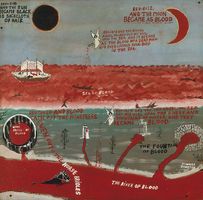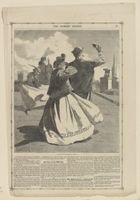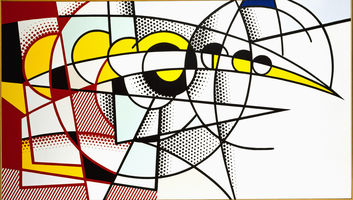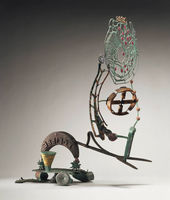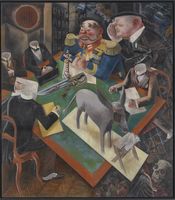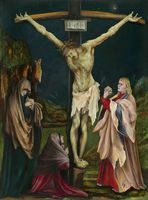L'Éclipse du Soleil en Pleine Lune (The Eclipse, the Courtship of the Sun and Moon)
George Méliés, French, 1861–1938
L'Éclipse du Soleil en Pleine Lune (The Eclipse, the Courtship of the Sun and Moon), 1907
Film
A contemporary of Howard Russell Butler, French director and producer George Méliès was a pioneer of filmmaking and is often heralded as the father of the science fiction genre in film. In his 1907 film L'Éclipse du Soleil en Pleine Lune (The Eclipse: Courtship of the Sun and Moon), Méliès used the eclipse as a catalyst for his fertile imagination. Méliès’s films were theatrical spectacles that exploited his skills as a trained magician and illusionist. His remarkable innovations in the art of film include pioneering the stop-motion technique (substitution-slice) and the use of multiple exposures, which allow the filmmaker to superimpose images and create dissolves for dramatic effect. Méliès’s elaborate set designs only heightened his fantastical approach to the subjects of his films, which often drew inspiration from scientific themes and personages.
In his 1907 film L'Éclipse du Soleil en Pleine Lune (The Eclipse, the Courtship of the Sun and Moon), Méliès himself plays an aging professor who gives a lecture about the impending eclipse to a class of young astronomers. When the eclipse finally arrives, his students run to the window with their handheld telescopes to view the event. The professor climbs a ladder to the room above the classroom, to see the eclipse from a large telescope. Unlike the eclipse rendered by the professor on the chalkboard during his lecture, the actual eclipse is depicted as two celestial bodies crossing paths, their human features gesticulating in such a way that film historians and viewers have seen this eclipse as symbolic of a romantic interlude. After the eclipse, other celestial bodies, including shooting stars, planets, and meteor showers, romp in the skies. The professor is overwhelmed by what he sees and topples from the tower into a barrel.
